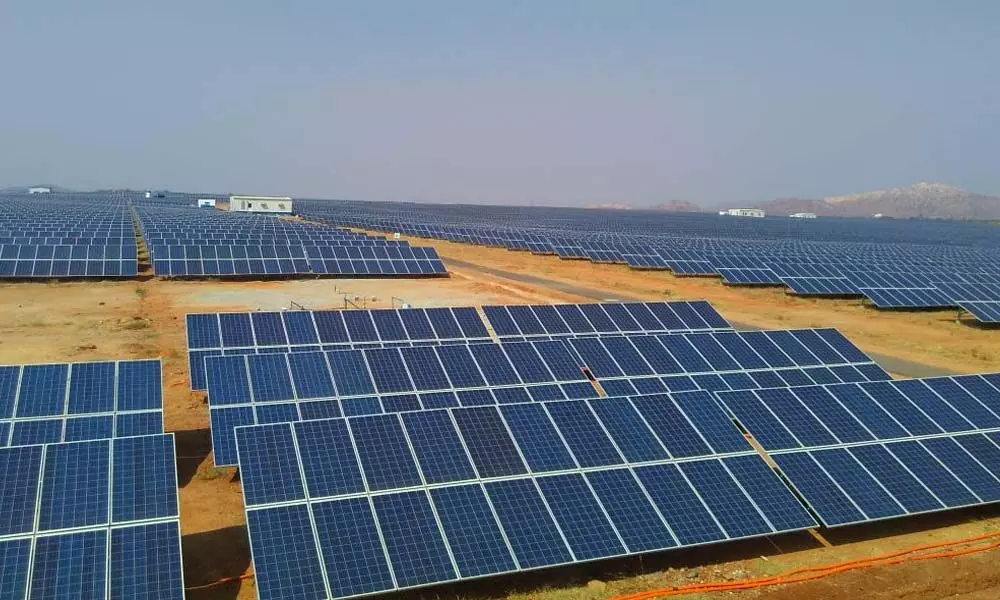India's solar industry needs a boost from govt
Investments into India’s solar sector are on a downslide.
image for illustrative purpose

Investments into India's solar sector are on a downslide. In 2020, the overall investment in the sector stood at $2.8 billion, down 66 per cent from the $8.2 billion pulled in 2019. The rate of capacity addition has slowed down as well. And if one has to attribute this slowdown to the pandemic, one must consider the facts and figures in a country like Vietnam. In 2020, Vietnam, the Covid-19 impacts notwithstanding, added 13 GW of fresh capacity. Compared to this, India added 3.2 GW, down 56 per cent from 7.3 GW in 2019. Even after Covid-19, industry experts do not expect growth to accelerate dramatically.
What is alarming is that as growth slows, an increasing number of solar firms are cutting overheads, selling off parts of their business, and even quitting the business.
For instance, in 2020 itself, Acme Solar sold projects worth 400 MW. Altogether, it's looking at selling 4.84 GW of its 5 GW capacity. More recently Azure Power sold its rooftop portfolio to Eversource Capital, a joint venture between Singapore-based private equity firm Everstone Group and British solar green energy major Lightsource.
Japanese investment giant SoftBank has sold SB Energy, its Indian renewables business with 4,954 MW in installed capacity, to Adani Green and announced its exit from the country. Renew Power is in talks with Amplus Power to sell its rooftop business as well. These are just some cases in point and there are many more.
Going by the current trend, India is likely to add 6-8 GW of fresh solar capacity a year from now on, at the most. And all these are not without a reason. Rural land is turning out to be increasingly costlier, forcing thereby the project costs to go up substantially.
Coupled with this, module prices, shipping and freight charges - all are heading northward. Then the slowdown in the economy -exacerbated by Covid-19 - and the government's response to it, has depressed demand. That's understandable. And what has rubbed salt on the wounds, the much-hyped rooftop sector has also slipped into crisis as DISCOMs, wary of losing their most profitable customers, pushed back.
Delayed payments by cash-starved DISCOMs, pushed developers into their own cash-flow crisis - a vicious cycle of the sort. Mind you that they run on cross-subsidisation, charging high rates from industrial and commercial users and providing cheaper (even free) power to poorer segments of India.
It did not require any rocket science to understand that the introduction of rooftop solar, where large firms generate their own power, would eat into their revenues. The government should have prepared its DISCOMs, by all means, before ramping up its rooftop solar targets.
The government of the day must wake up from its slumber and rise to the occasion, otherwise, Prime Minister Narendra Modi's highly ambitious plans to push India's solar capacity to 100 GW by 2022 - from around 37 GW today may remain a distant dream. And one should not blame it on the pandemic alone.

